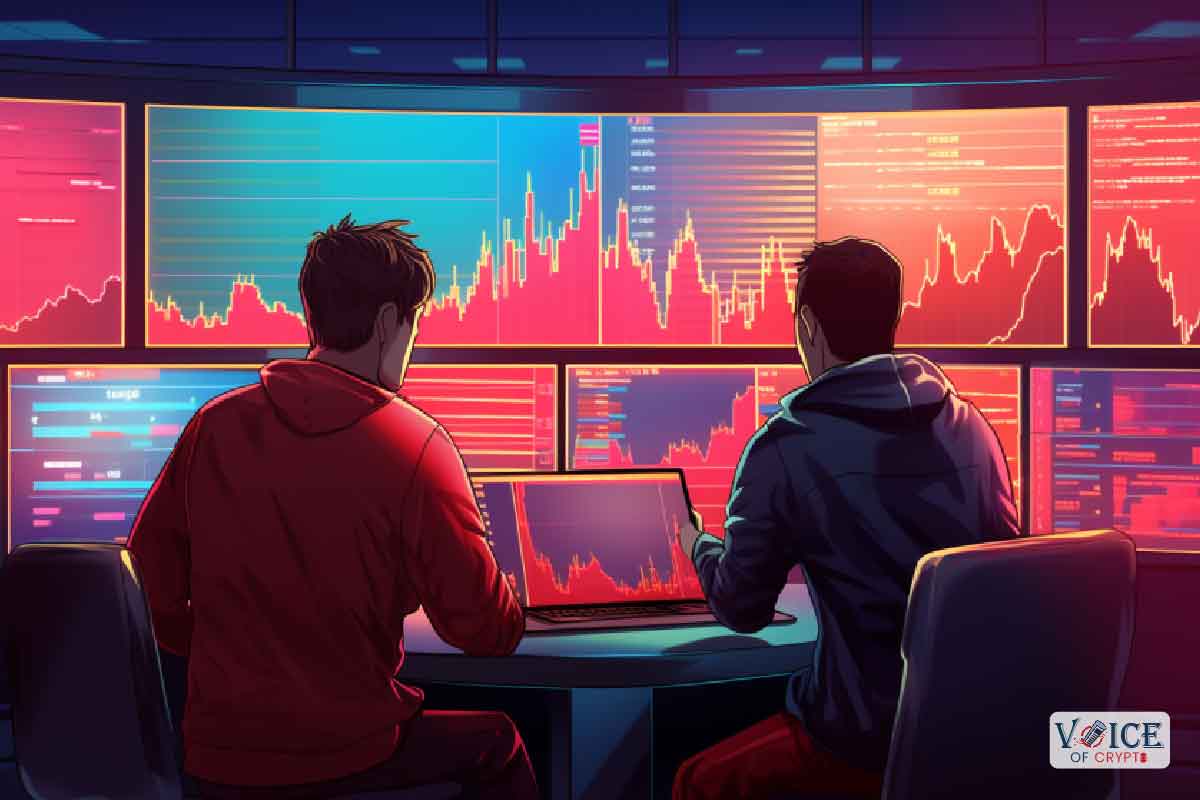Key Insights:
- Centralized Exchanges (CEXs)
- Top Things To Know Before Using a CEX
- Pros of Using a Centralized Exchange
- Cons of Using a Centralized Exchange
- Decentralized Exchanges (DEXs)
- Top Things To Know Before Using a DEX
- Pros of Using a Decentralized Exchange
- Cons of Using a Decentralized Exchange
- Peer-to-Peer Trading
- Crypto Exchange Traded Funds (ETFs)
- List of Cryptos That Can Be Traded via an ETF (Present and Upcoming)
- Things to Know Before Trading Crypto via ETFs
- Pros of Crypto ETFs
- Cons of Crypto ETFs
- Face-to-Face (F2F) Trading
- Centralized exchanges are the most beginner-friendly platforms.
- Decentralized exchanges provide greater privacy but have a steep learning curve.
- Peer-to-peer trading is often suited to those who want to keep their transactions private.
- ETFs have also emerged as a new way to trade crypto with high security but a lesser degree of ownership.
- Face-to-face is a new crypto trend where people meet in real life to conduct crypto trades for cash, goods, or any other valuables.
Centralized Exchanges (CEXs)
Centralized exchanges are the easiest way to trade crypto. They are beginner-friendly and support several buying and selling modes, such as through cash, credit card, debit card, PayPal, and wire transfer. They also host thousands of cryptocurrencies on their platforms.
Besides usual spot trading, centralized exchanges also offer several other features at one stop, like derivatives trading, OTC trading, leverage trading, technical charts, expert advice, and many others.
However, they also carry some risk. The centralized exchanges are the prime targets of large groups of organized hackers like Lazarus. A few examples include the Bybit Hack, where $1.4 billion of ETH was stolen, and the WazirX hack, where $230 million worth of crypto was lost.
Among centralized exchanges, Binance has the highest trading volume at roughly $25 billion per day. Other notable exchanges include OKX, Bybit, Coinbase, and Crypto.com.
Top Things To Know Before Using a CEX
- According to law, crypto owned by exchanges legally belongs to them unless they go bankrupt.
- A CEX is always a regulated entity, while others may not be.
- Centralized Exchanges enjoy ecosystem benefits and can recover from major losses, such as in Bybit.
Pros of Using a Centralized Exchange
- Easy to use and beginner-friendly.
- Multiple services at the same spot like crypto, derivatives, leveraged trades, OTC, and swapping.
- Zero fees for internal trades.
- Lesser risk of forgetting passwords than self-custody solutions.
Cons of Using a Centralized Exchange
- User funds could get frozen and wallets wiped if law enforcement demands so or if the exchange deems it fit.
- High risk of government censorship.
Decentralized Exchanges (DEXs)
Decentralized Exchanges are the favorite platforms to buy crypto for seasoned users. These exchanges are completely on-chain and, hence, have much greater transparency. A decentralized exchange typically serves one blockchain (like Raydium on Solana) or an ecosystem (Uniswap for EVM Chains), but there are several that go multi-chain (like AlliumSwap).
Unlike centralized exchanges, DEXs do not store your crypto, and you typically can interact with them using a Web3 wallet. Different DEX chains support Web3 wallets according to their blockchain, like MetaMask for EVM chains, Pera Wallet for Algorand, and Solflare Wallet for Solana. However, there are several multi-chain wallets too, like Trust Wallet and Phantom.
Top Things To Know Before Using a DEX
- Crypto sent to the wrong address is lost forever.
- All blockchains have different compatibilities which means crypto sent from one chain might not go directly to the other.
- Wallet passkey, secret phrase, and private keys should not be shared with anyone.
- Using multiple wallets reduces your chances of getting drained.
- No DEX or DeFi protocol is 100% safe.
- Blockchain explorers can see your trade data but not your name.
- Crypto is stored always on a blockchain
Pros of Using a Decentralized Exchange
- Self-custody benefits that protect your crypto from FTX-like incidents.
- Much greater privacy than centralized exchanges.
Cons of Using a Decentralized Exchange
- No in-exchange wallet, unlike CEXs.
- It sometimes gets difficult to calculate tax unless you use invasive methods like portfolio trackers.
Peer-to-Peer Trading
Peer-to-peer trading is a method to trade crypto where two users meet online or offline to conduct crypto trades. This method has emerged due to the need for greater privacy in crypto trading.
Things to Know Before You Trade via Peer-to-Peer
- Always make your trades with verified traders.
- To lower the risk of getting scammed, ensure that you have traded with a verified party on a verified p2p platform like Binance P2P, OKX P2P, etc.
- There is a risk of getting investigated if your trading partner has obtained funds or crypto from illicit sources.
Pros of Doing P2P Trading
- Provides greater privacy than all online methods.
- It has a much easier learning curve.
- Trusted platforms like Binance use escrow to ensure fair settlement.
Cons of Doing P2P Trading
- Higher risk of getting scammed
- Higher risk of account getting frozen due to AML laws.
- Higher risk of trading with a blacklisted source or a trader which has obtained funds from illicit sources.
Crypto Exchange Traded Funds (ETFs)
Exchange-traded funds have emerged as a leading way to trade crypto, as most altcoins either already have an ETF or are in the process of getting one.
This method is better suited for traditional investors who can make their stocks, bonds, and other investments along with crypto from the comfort of their trading account. ETFs also liberate crypto-native users from the hassle of self-custody, private keys, and a chain of passwords.
List of Cryptos That Can Be Traded via an ETF (Present and Upcoming)
- Bitcoin (spot and derivatives)
- Ethereum (spot and derivatives)
- Solana (spot and derivatives)
- XRP (spot only)
- Dogecoin (spot only)
- Cardano (spot only)
- Chainlink (spot only)
- Avalanche (spot only)
- Litecoin (spot only)
Things to Know Before Trading Crypto via ETFs
- The ETF issuers will always be the crypto custodians.
- Investment decisions into crypto is based on ETF demand and not on expert based strategies.
- Spot ETFs are different than strategy ETFs (latter is meant for derivatives).
- It is still unclear how crypto hacks will be dealt.
- ETFs are considered securities even if the underlying crypto is not.
Pros of Crypto ETFs
- Easiest and safest way to buy crypto.
- A good instrument for long-term accumulation, as you can claim your ETFs in the future, even if you lose the password.
Cons of Crypto ETFs
- No ownership of crypto as the ETF trust owns all the crypto.
- You cannot avoid unrealized capital gains tax if your country levies it.
- No staking or DeFi benefits unlike direct ownership.
Face-to-Face (F2F) Trading
Face-to-face trading is a new way of trading crypto where two people meet via a third-party platform, social media, or a crypto platform, to trade crypto for cash, valuables, or money transfer. This method has arisen out of peer-to-peer trading due to the rising scams in online P2P.
The meeting usually takes place in public crypto conferences where such trades are available at high density, but these trades can also take place in other public places where traders meet via third party apps like social media, crypto forums, etc.
Things to Know Before You Trade via Peer-to-Peer
- Always trade at safe public locations.
- Try to get an idea about the trader before initiating any trade.
Pros of Crypto F2F
- Highest grade of privacy.
- Lesser chances of getting scammed as in P2P.
- Very low traceability.
Cons of Crypto F2F
- Chances of trading with illicit counterparts remain high.
- Risks of counterfeit currency remain high.
Disclaimer: This article is intended solely for informational purposes and should not be construed as financial advice. Investing in cryptocurrencies involves substantial risk, including the possible loss of your capital. Readers are encouraged to perform their own research and seek guidance from a licensed financial advisor before making any investment decisions. Voice of Crypto does not endorse or promote any specific cryptocurrency, investment product, or trading strategy mentioned in this article.









